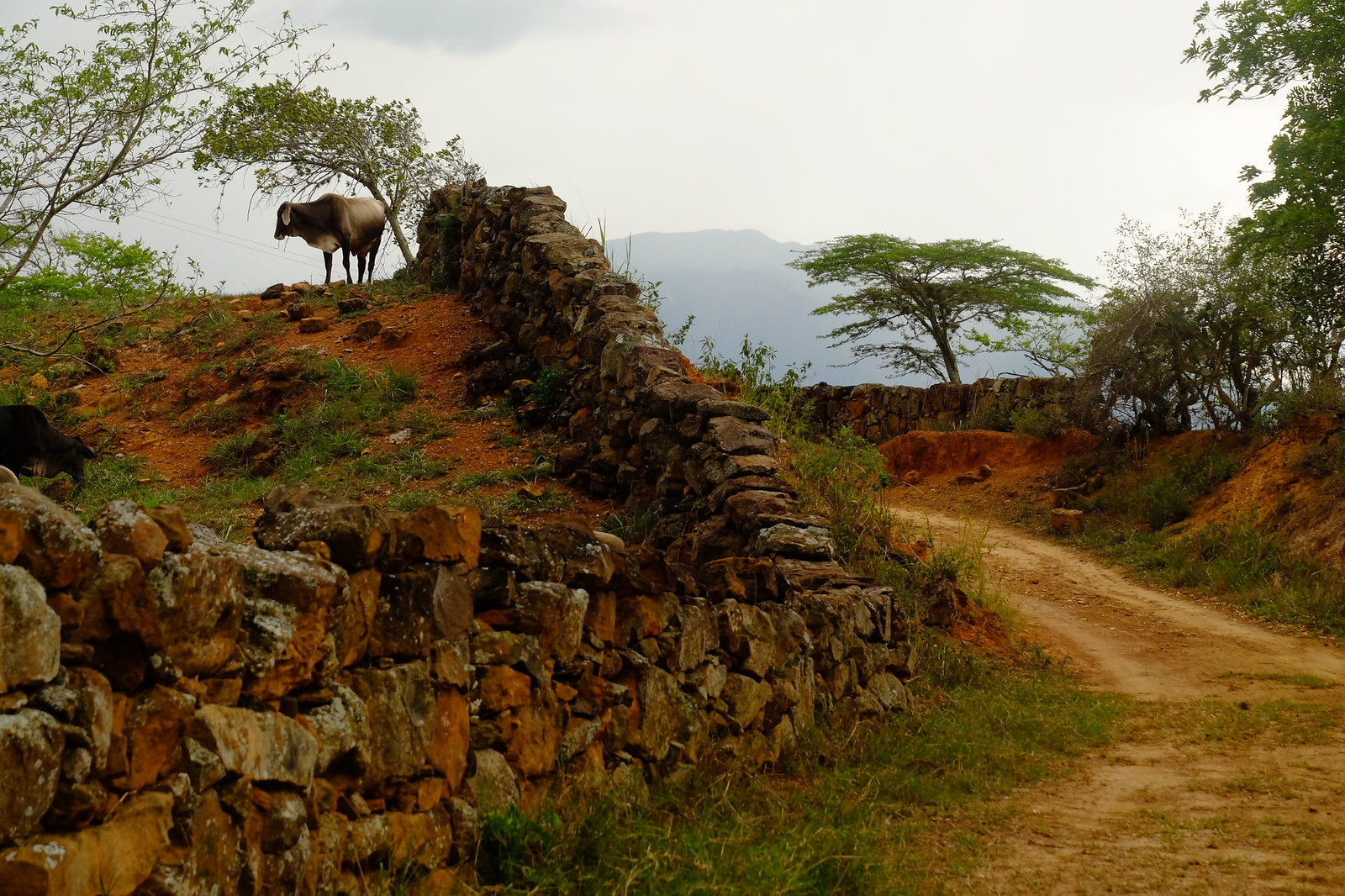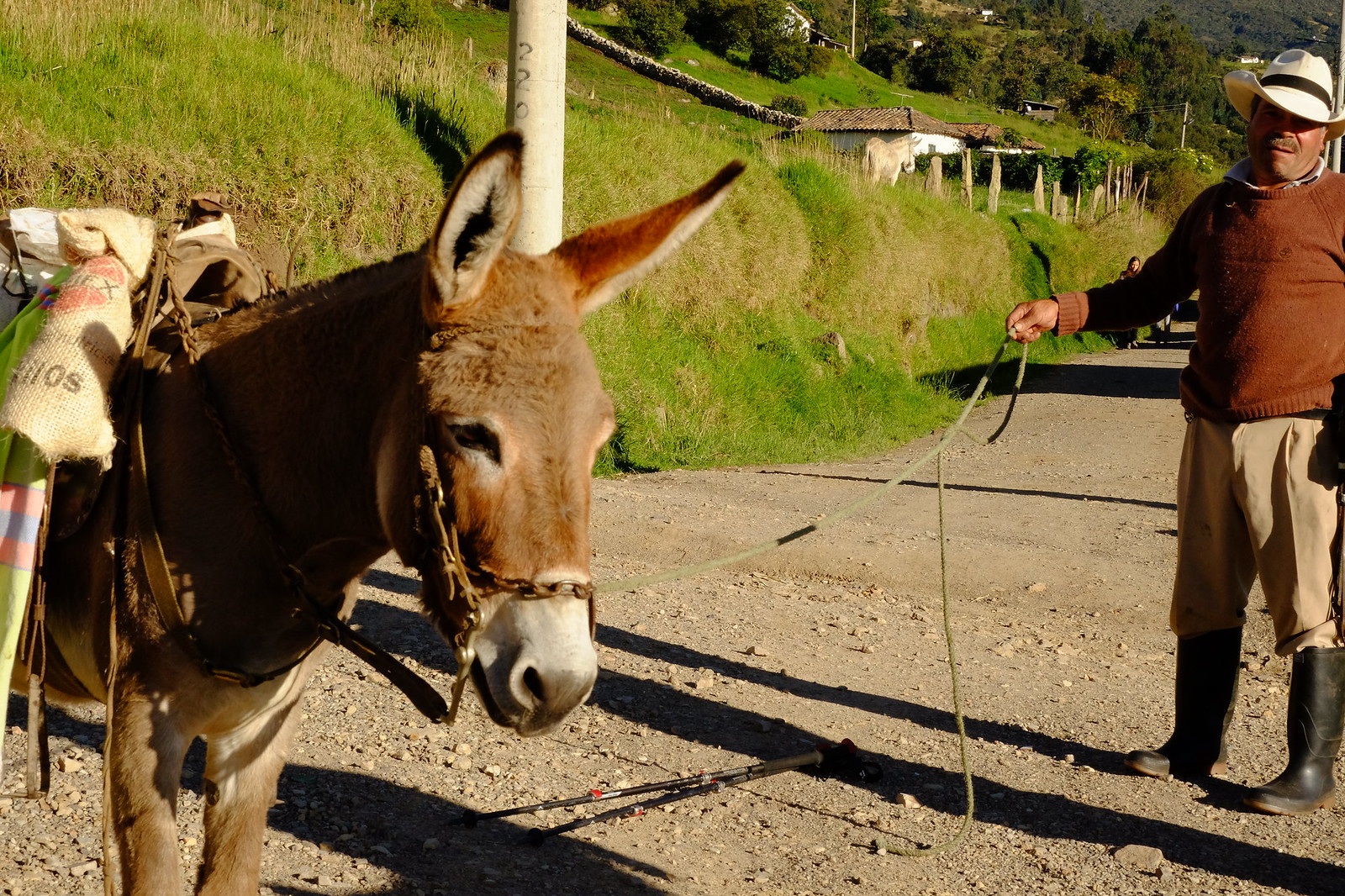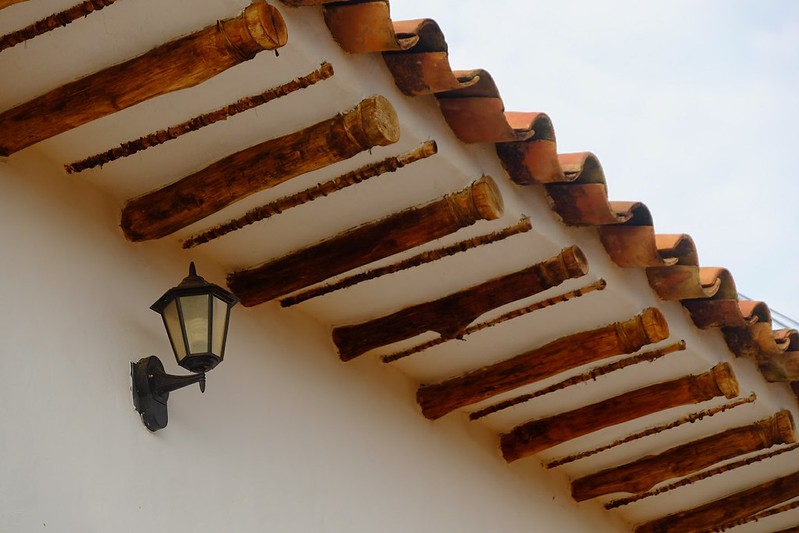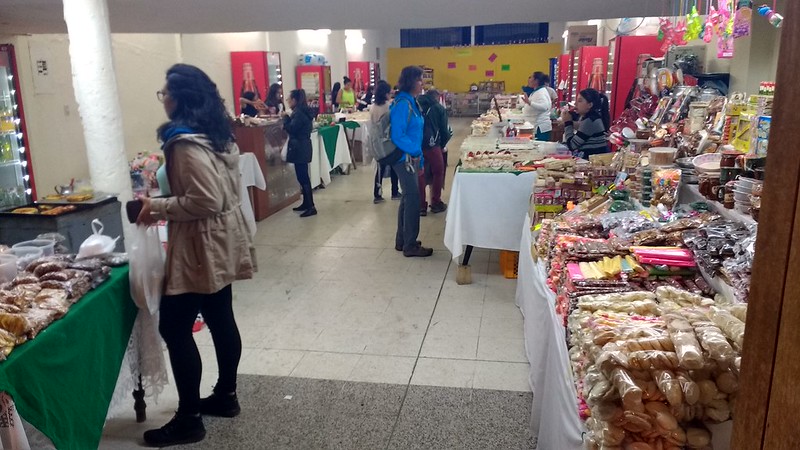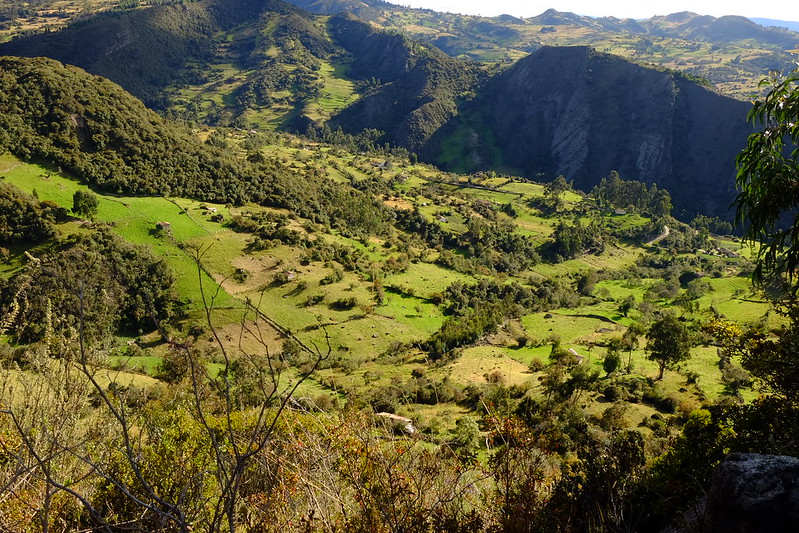Colombia is divided into states, which they call departments. After Minca, we headed to higher elevations again and visited several towns and villages in Santander and Boyaca departments. Starting in the north in Santander, we based ourselves in the city of Bucaramanga, which took us two days to pronounce properly, was nice in that it didn’t have tourists, and is where we met the nicest people in all of Colombia, which is saying something. It is also where we had the best steak we’ve had in South America, along with the very best arepas. Arepas are like pitas made with corn instead of wheat. The rest of the country uses white corn, but in Santander they use yellow corn and, well, that confirmed why I tend to buy yellow corn tortilla chips at home.
If you read any guidebook on South America, you’ll see that the list of busiest times and highest prices for desirable destinations outside of big cities tend to include something called “Semana Santa.” This is Holy Week, the week before Easter, when much of South America goes on vacation. It was during Semana Santa that we found ourselves in this part of Colombia. As luck would have it, our next destinations were two of the most desirable places within long-weekend-driving-distance of Bogota: San Gil, known for extreme sports; and Barichara, a very well preserved Colonial village.
 Surprisingly big and busy market for small town San Gil
Surprisingly big and busy market for small town San Gil
Knowing we still had our little-used tent to fall back on if we had to, we set off from Bucaramanga on an incredibly scenic bus ride to San Gil. We didn’t find out how extreme the sports were because we only stayed one night in probably the worst hostel we’ve stayed in on this trip, before heading to Barichara.
 The hills and cobblestone streets of Barichara
The hills and cobblestone streets of Barichara
While Cartagena may be the best preserved colonial city in the Americas, Barichara holds its own as an extremely well-preserved colonial village with all white walls and clay tile roofs. We were able to find a place to stay, so didn’t have to resort to sleeping in the tent at the cliff’s edge at the end of town like we saw another couple do. I’m glad we stayed overnight because during the day it was crazy with daytrippers from Bogota, even though it’s apparently a four-hour drive one way!
Barichara is a place for wandering around, taking photos, looking at the artisan shops and going into tiny museums. We also took a 2-hour walk on an ancient stone path to an even smaller village that was nearly as well preserved. Along the way we passed some farms and took in the views.
 The start of the ancient trail
The start of the ancient trail
 Church in the tiny village at the end of the trail
Church in the tiny village at the end of the trail
With Easter Sunday successfully behind us, we headed south to Sogamoso — another name with too many vowels that gave us fits — in Boyaca Department. We used Sogamoso as a base to explore nearby villages and the paramo, which is a unique alpine tundra ecosystem located above the treeline but below the snowline that only exists in a few parts of the world, most of which is in Colombia.
 Peter on a cool rock on our hike to the paramo
Peter on a cool rock on our hike to the paramo
As we were walking through one of the very traditional villages to get to the paramo, we came upon two old men with a donkey who started a conversation with us, only half of which we could understand. This was one of many times we’ve been very thankful we can speak some Spanish, but also regret not being closer to fluent because we would have loved to have understood everything they said. I also really wanted a photo of them so tried to be sneaky and ask if I could take a picture of the donkey, and when they moved away from the donkey I said oh, you can be in the photo too! Oh no, they didn’t want that, so you can see the owner is standing as far from the donkey as the lead rope would allow. Cursing myself for not having a wide angle lens on the camera, I did the best I could to appear to be taking a photo of only the donkey.
This village was also unique in that it has some industry: about 90 villagers who would otherwise have no work make soccer balls, including some fabulous balls that are handsewn and made of leather. Another village was known for its clothing.
And with that, it was time to head back to Bogota and leave Colombia.
Click here for a few more photos:


